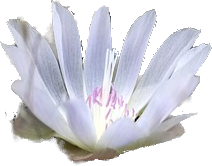Visibility Analysis of
the Rocky Mountains
What is this?
Simply put this site will show you where you can see the Rocky Mountains from in each of these four states: Montana, Wyoming, Colorado, and New Mexico. Utilizing GIS software and publicly available data from the U.S. Geological Survey I was able to create a viewshed, the results of a type of analysis that uses a heightmap and defined points to identify weather a point can see a certain area, for a multitude of high points within each state. This, in practice, resulted in the areas where the mountains can be seen from.
Why is this useful? It can help narrow down the area needed for a more specific viewshed analysis. It can give geographers a new consideration for defining the rocky mountain region. And it's fun and interesting!

Montana
Home of Montana State University, where this project began. As beautiful as Colorado, but without the people.
Discover Montana
Wyoming
The least populated state. The howling winds are what kept people away, but the Teton Mountains and Yellowstone bring the few that live there in.
Discover Wyoming
Colorado
The highest average elevation of all U.S. states. No rivers that flow into the state originate outside Colorado.
Discover Colorado
New Mexico
The southernmost state in this analysis. The Rio Grande runs straight down the middle of the state, with mountains to either side.
Discover New MexicoAbout the Process
Here is a closer look onto what had to be done to create this dataset:
- I obtained the Digital Elevation Models for each state.
- I ran a mosaic function on the DEMs to combine them into one raster.
- I ran a binary raster process to identify what areas were mountains. I turned this into a polygon.
- I subdivided the mountain polygon horizontally into 100 sections and vertically into 40 sections.
- I ran a zonal analysis using the subdivisions as zones, finding the maximum value.
- I isolated the maximum value to a point by finding when the zonal analysis was equal to the original raster.
- I then created a 1km buffer around each point and repeated step 5 and 6 for the buffered region.
- I then filtered these points to only the ones where the zonal maximum point was the same as the buffer maximum point.
- Before running the viewshed analysis I resampled the raster to have a cell size 10 times larger. And reprojected the map into the 1984 state plane projection for the state.
- I ran the viewshed analysis using this raster and the observation points identified in part 8.
- After 1 to 2 hours of processing time, I had a raster of the viewshed, I then simplified it to a binary of whether any mountains were visible or not.
- This was then converted into a polygon and clipped to the borders of the state.
General Citations
All images have been edited for increased visual appeal.
Yucca Image by Gabriele M. Reinhardt from Pixabay
Columbine Image by Bryan Hanson from Pixabay